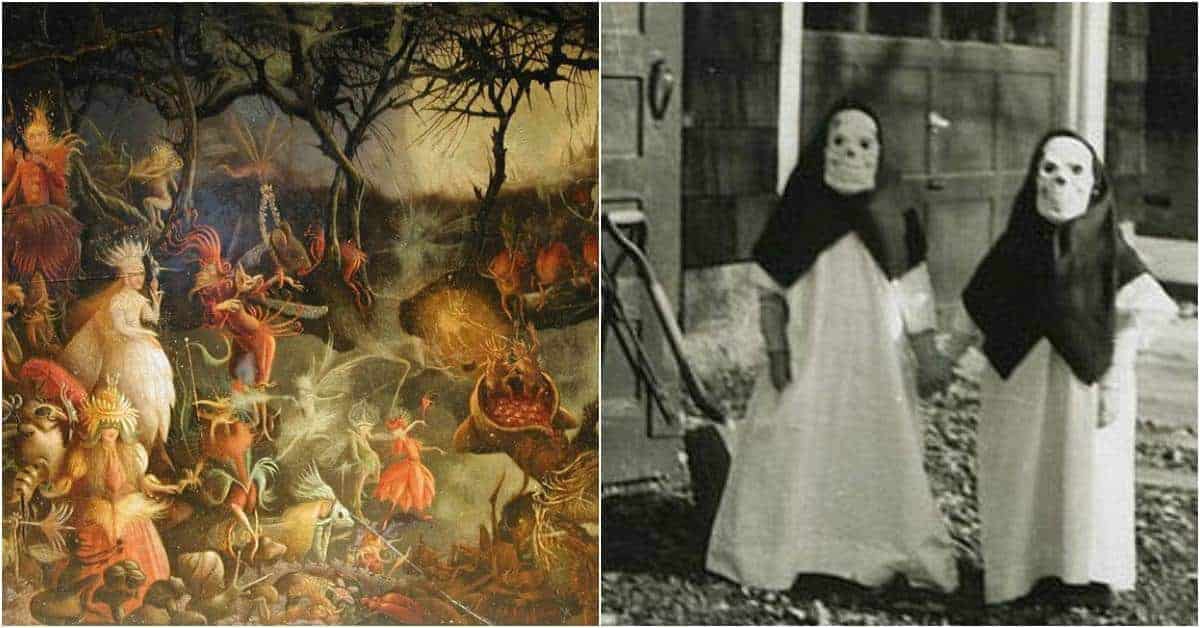Halloween is one of the most popular modern holidays. It’s a time for pranks and parties, when grown-ups and children alike dress up as ghouls and ghosts and go out trick or treating, lighting up the dark autumn nights with pumpkin lanterns.
To many, however, it’s a frivolous festival; over commercial and meaningless. Some Christians disapprove of Halloween, seeing it as pagan and corrupting. Others, such as modern pagans, defend its ancient origins, reclaiming it from Christianity which they believe has usurped it.
In reality, Halloween is something of both. It is an ancient festival, initially intended to mark the descent into winter. People have known the festival by many names: Samhain, All Hallows, and Hallowmass being just a few. However, it is too simple to say anyone belief system has usurped Halloween. Instead, the festival has evolved, with beliefs from many cultures and religions- pagan and Christian- grafted onto the original idea. Time and circumstance may have repackaged some of the aspects of Halloween. But they remain. Here are nine of its elements and customs that show this evolution.
Time and circumstance may have repackaged some of these aspects of Halloween. But they remain. Here are nine of its elements and customs that show this evolution.

1. Winters Beginning, Summer’s End
The festival celebrated at the end of October and the beginning of November, known today as Halloween, has its roots in the prehistory of northwestern Europe. Most people think it is of Celtic origin. The truth is, the origins of Halloween are older still. Our best evidence for the celebration of this old form of Halloween comes from the folk traditions left behind by the past cultures of the British Isles: its Celtic and pre-Celtic peoples, as well as its Germanic and Scandinavian settlers. The names they used for it are also revealing.
Samhain (pronounced sow-in), is the name by which we most commonly know this ancient festival today. It is an Irish/Gaelic term, which refers to the assemblies held by the ancient Kings of Ireland at the end of every summer. Here, the tribes would gather and feast- and divine what lay ahead. However, Samhain is just one of its names. To the Welsh, the Celtic nation whose principality occupies the west of Britain, October 31st is still known as Nos Calan Gaea- Winter’s Eve. November 1st, in its turn, is Calan Gaeaf- the first day of winter.
Between October 11-17, the Vikings held what their Sagas referred to as The Winter Nights; a series of festivities that began on the first Saturday of that period. According to Bede, the eighth-century Saxon monk, and chronicler, the Saxons referred to October as Vuinter-fylleth – the coming of winter and November as Blod -monath– the blood month. One of the characteristics of this time of the year in all these early agrarian societies was to slaughter all the weaker livestock to preserve feed for those that were strongest and more likely to survive the winter months.
For this was Halloween’s original purpose: as a festival to mark the passing of summer- and the beginning of winter. The motive of all those who celebrated it was straightforward: to weather the cold, barren months ahead. The earth was going to sleep. Farmers had gathered the harvest, livestock was close by and corralled in the home fields. Now it was necessary to protect all this, sustain the family and tribe- and survive.

